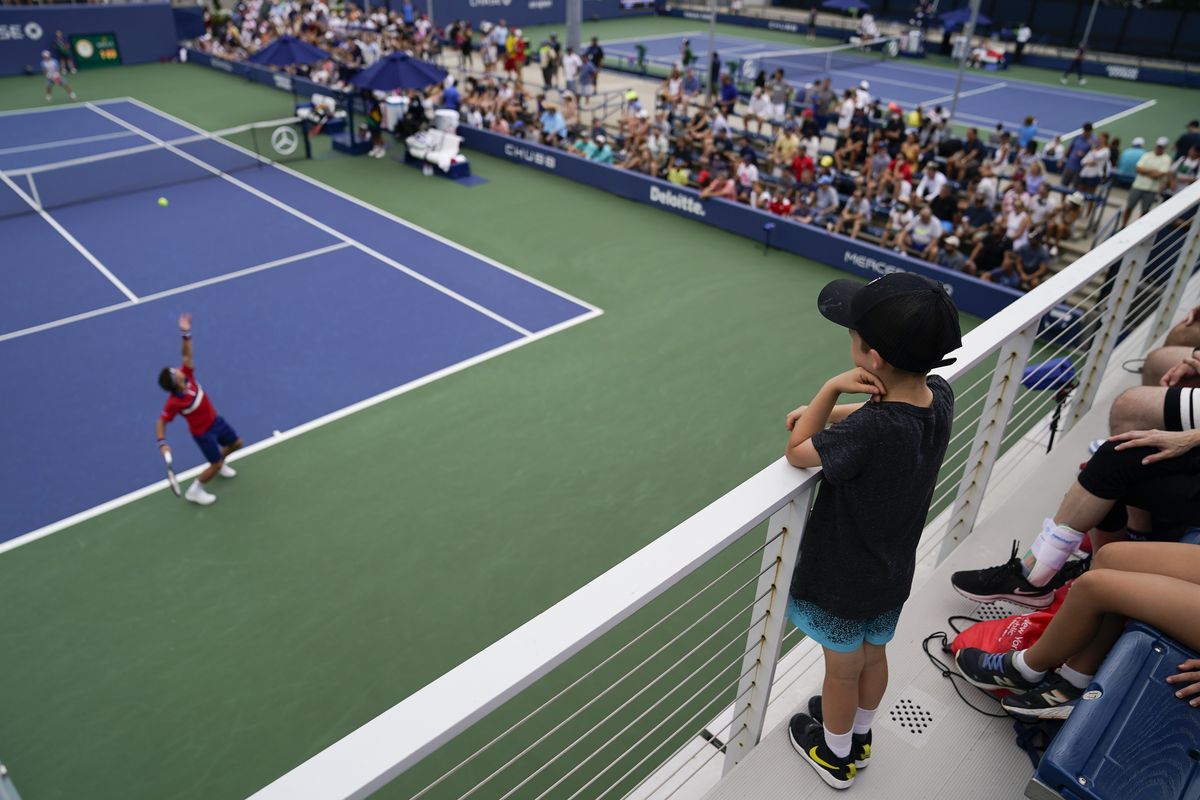Even as COVID-19 cases rise, US Open, other events welcome fans

Associated Press
NEW YORK – Full-throated shouts and hearty applause returned to the U.S. Open tennis tournament Monday, bursts of sound that offered some form of reaction to nearly each and every action. Also back: lengthy lines to get through the gates and to buy something to eat or drink.
A year after spectators were banned entirely from Flushing Meadows because of the coronavirus pandemic, lending a dystopian feel to a normally lively event, 100% capacity is once again being permitted – proof of vaccination needed; no masks required – at this and other sporting events.
College football resumed Saturday, with tends of thousands on-hand for such matchups as Illinois vs. Nebraska or Hawaii vs. UCLA. The NFL is letting its teams sell every ticket for the regular season; its first Sunday is Sept. 12.
Makes it tough to tell there’s been a recent surge in COVID-19 cases thanks to the highly contagious delta variant. Ready or not, our fun and games are moving forward, with full stadiums and, in some cases, few protocols.
“Playing without fans here last year was brutal,” 2017 U.S. Open champion Sloane Stephens told the crowd at Arthur Ashe Stadium after beating Madison Keys in three sets in a rematch of their all-American final four years ago.
Having an audience there makes it all mean more – to those competing and to those watching, who are more than just part of the scenery.
They’re a character in the show.
“After all, that’s what we’re here for. We try to put on the best performance possible for them,” said Lloyd Harris, a South African scheduled to play Tuesday. “For me, the more people I play in front of, the bigger the audience, the better tennis I play.”
People in the seats add to the soundtrack, as Stephens noted, but also to the pageantry, to the swirl of emotions for everyone involved, providing a human element at a time when that is disappearing in many ways. Just one example: This U.S. Open is the first without a single line judge on any court, just chair umpires assisted by an electronic line-calling system.
Elsewhere, though, folks were everywhere.
They ordered the Honey Deuce, touted as the U.S. Open’s signature cocktail, served for $20 in a souvenir glass.
They stood along the walkway between Court 13 – where Serbia’s Dusan Lajovic defeated France’s Benoit Paire – and Court 14 – where Canada’s Leylah Fernandez eliminated Croatia’s Ana Konjuh.
A particularly boisterous bunch at Court 5 offered support for Argentina’s Diego Schwartzman, twice a U.S. Open quarterfinalist.
“The event changed 100 percent. It’s a totally different feeling,” Schwartzman said, adding that it “also feels a little bit weird” to be at the first Grand Slam tournament in more than 18 months with full capacity.
Every so often, a burst of sound could be heard from one of the 16 courts hosting action.
There’s something significant about the shared experience that’s simply absent when we’re atomized, fragmented, forced to be apart from each other, as we’ve been lately. Sports, along with other forms of entertainment, offer a measure of escape from day-to-day life.
Perhaps that’s why Americans are going to Broadway shows, movie theaters, music concerts. All despite COVID-19 deaths running at more than 1,200 a day nationwide, the highest level since mid-March. New cases per day are averaging over 155,000, returning to where things were in January.
That’s why there was a hint of worry on the part of Juan Manuel Gómez, a fan from Guadalajara, Mexico, who watched French Open runner-up Stefanos Tsitsipas practice Monday.
“We know there was risk, but we think it was worth taking,” said Gómez, whose wife, Lety, shot video of Tsitsipas with her phone.
Compared to visiting Times Square during their vacation with their two sons, ages 9 and 13, she said, “We feel safe here,” knowing spectators needed to show proof of vaccination to get in.
According to guidelines from the Centers for Disease Control and Prevention, fully vaccinated people don’t need to wear a mask in outdoor settings, even among crowds – unless they can’t avoid close contact with unvaccinated people. (The vaccination requirement doesn’t apply to players, about half of whom have gotten shots.)
Pat James, a 65-year-old retiree from Mendham, New Jersey, who was with her friend and neighbor, Barbara Ruggeri, was thrilled when the U.S. Tennis Association was pushed by the New York mayor’s office to add the requirement last week.
“Actually, I didn’t have apprehension so much about the COVID as I did about some other issues, like terrorism,” James said, after posing for a photo with the Unisphere from the 1964 New York World’s Fair that sits not far from one of the Billie Jean King National Tennis Center’s main entrances. “I had a little trepidation last night. But we’re both vaccinated. When we got into a crowd, we wore our masks. I just wish people would get vaccinated, so this would end.”
Even if no one knows when “this” really will end, the hustle and bustle of our lives appears to be on its way back.
Certainly for two weeks in Flushing Meadows, anyway. A far cry from 2020.
“You cannot compare the atmosphere. It’s much better. You feel the energy. You feel alive on court,” said Simona Halep, a two-time Grand Slam champion who autographed hats and tennis balls thrust at her by front-row fans after a victory over Camila Giorgi at the Grandstand. “So, yeah, hopefully we’ll stay like that forever now.”